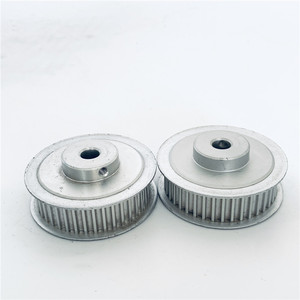Pulley Belt Alignment: An Essential Element in Mechanical Systems
Pulley belt alignment is a critical aspect in ensuring the efficient operation of mechanical systems. It involves the precise positioning of pulleys and belts to avoid wear, overloading, and misalignment that can lead to premature failure of machinery. Proper alignment not only increases the lifespan of components but also enhances overall system performance. Understanding the importance of pulley belt alignment is key for maintenance professionals and engineers who strive for optimal operational efficiency.
Types of Pulley Belt Alignment Systems
When it comes to pulley belt alignment, there are several types of systems that can be utilized to ensure that your belts and pulleys are correctly aligned:
- Manual Alignment Tools: These typically include straightedges and alignment rulers that help users visually inspect the alignment. They require precision and practice to use effectively.
- Laser Alignment Tools: Advanced tools utilize laser beams for pinpoint accuracy. They are often used in industrial settings due to their high level of precision.
- Vibration Analysis Systems: These systems monitor vibrations in the machinery, indicating misalignment when vibrations exceed acceptable levels.
- Alignment Apps and Software: With the rise of technology, mobile applications and software provide DIY enthusiasts with tools to perform alignment tasks using their smartphones.
Function and Features of Effective Pulley Belt Alignment
Understanding the function and features of pulley belt alignment can significantly enhance your systems' reliability and longevity. Key elements include:
- Load Distribution: Ensuring that the load is uniformly distributed across the belt and pulleys minimizes wear and tear.
- Energy Efficiency: Proper alignment reduces friction and energy consumption, leading to cost savings over time.
- Noise Reduction: Aligned pulleys and belts operate smoothly, decreasing operational noise levels significantly.
- Increased Safety: Correct alignment reduces the likelihood of equipment failure, protecting both operators and machinery.
How to Choose the Right Pulley Belt Alignment Method
Selecting the suitable method for pulley belt alignment will depend on factors specific to your operational environment. Here are considerations to keep in mind:
- Type of Machinery: Evaluate the machinery's complexity and the existing alignment issues to determine whether simple manual methods or advanced laser systems are necessary.
- Frequency of Alignment Checks: If frequent adjustments are needed, investing in a laser alignment tool may prove beneficial for ease and accuracy.
- Environmental Conditions: Consider the working conditions; harsh environments may require robust tools designed to withstand extreme temperatures or dust.
- Budget Factors: Weigh the upfront cost of alignment tools against potential savings from improved efficiency and reduced maintenance costs.
Conclusion
Pulley belt alignment is a crucial aspect that cannot be overlooked in machinery maintenance. By understanding the types of alignment systems available, their functions and features, and knowing how to choose the right method, you can significantly improve the operational efficiency of your equipment. Investing time and resources into maintaining proper pulley belt alignment ultimately leads to reduced downtime, lower operational costs, and an extended lifespan of your machinery.





















































